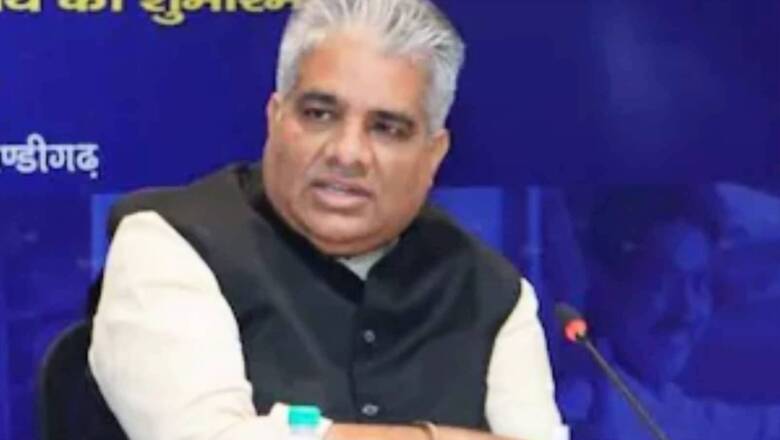
views
Deaths due to cyclones have reduced by 90 percent in India in the last 15 years, and have been contained to 100 for the last ten years, due to early warning systems across the east and west coast of the country, Union Environment Minister Bhupender Yadav said at COP27 in Egypt on Monday.
The minister, who was speaking at the UN Secretary General High Level Round Table to launch the “Early Warnings for All Executive Action Plan”, stressed that with climate finance still a ‘mirage’, climate mitigation in the form of early warning dissemination is key to safeguarding lives and livelihoods and from natural disasters.
Pointing that the global pace of climate mitigation was not enough to contain the rate of climate change, the minister also said that the countries most capable of doing something were the least affected and the biggest contributors.
“We fully support the Secretary General’s agenda to achieve ‘Early Warnings for All’…there is an urgent need for the world to acknowledge the cascading natural hazards that cause substantial losses around the world,” he said.
“But these issues focus our minds for a moment and then soon lose attention as the countries most able to do something about it are the least affected. They are also the biggest contributors to climate change.”
Much of the developing world, including India, lies in the area most vulnerable to climate change, between the tropics of Cancer and Capricorn, he said. The intensification of tropical cyclones in the Pacific and Caribbean means that some small tropical states have lost 200 per cent of their national income in a few hours, he said.
Climate finance is still scarce, he said, and climate adaptation would help contain not just immediate physical damages but also in mitigating the far-reaching long-term socio-economics implications that follow. India has been working on strengthening end-to-end early warning systems for all hydro-meteorological hazards. This has led to concrete results, he said.
Deaths by cyclones have been reduced by 90 percent in the last 15 years and we have a nearly 100 percent coverage of early warning systems for cyclones on both the east and west coasts. Similarly for other hazards, such as heat waves, we are making swift progress, he said.
“We have integrated hazard, vulnerability and exposure information to develop Web – DCRA (Dynamic composite Risk Atlas) to enable swift and advanced action on early warnings,” he said. “The Cyclone Warning Division (CWD) at IMD, New Delhi also acts as a multilateral Regional Specialised Meteorological Centre for monitoring, predicting and issuing warning services on tropical cyclones developing over the north Indian Ocean (one of the six centres in the World) along with 13 countries in the Bay of Bengal and Arabian Sea region.”
The meteorological data from IMD along with Tropical Cyclone Advisory Bulletins have helped the 13 countries in the Bay of Bengal and Arabian Sea region minimize deaths to 100 due to tropical cyclones during the last 10 years, he added.
“We would now like to maximize the full potential of Early Warning Systems for not just reducing the loss of lives but also livelihoods and national development gains. India has spearheaded the Coalition for Disaster Resilient Infrastructure (CDRI) which is working towards developing applications of climate forecast and early warning for reducing infrastructure losses and disruption in basic services.”
Yadav was speaking at the launch of the plan unveiled on Monday by Guterres, which calls for initial new targeted investments between 2023 and 2027 of 3.1 billion USD.
(With inputs from agencies)
Read all the Latest India News here



















Comments
0 comment